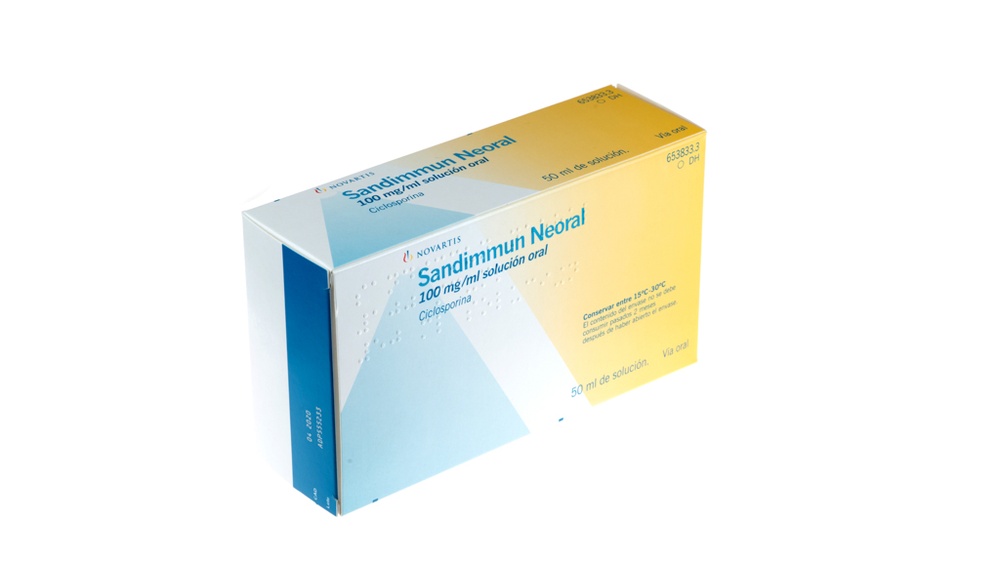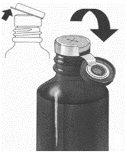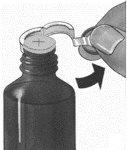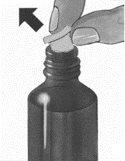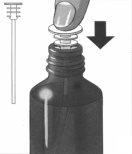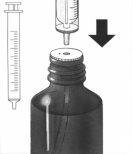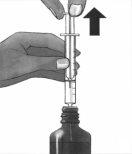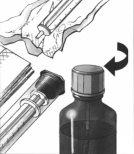
How to use SANDIMMUN NEORAL 100 mg/ml ORAL SOLUTION
Introduction
Package Leaflet: Information for the Patient
Sandimmun Neoral 100mg/ml oral solution
ciclosporin
Read all of this leaflet carefully before you start taking this medicine because it contains important information for you.
- Keep this leaflet, you may need to read it again.
- If you have any further questions, ask your doctor or pharmacist.
- This medicine has been prescribed for you only. Do not pass it on to others. It may harm them, even if their signs of illness are the same as yours.
- If you get any side effects, talk to your doctor or pharmacist. This includes any possible side effects not listed in this leaflet. See section 4.
Contents of the pack and other information
- What is Sandimmun Neoral and what is it used for
- What you need to know before you take Sandimmun Neoral
- How to take Sandimmun Neoral
- Possible side effects
- Storing Sandimmun Neoral
- Contents of the pack and other information
1. What is Sandimmun Neoral and what is it used for
What is Sandimmun Neoral
The name of your medicine is Sandimmun Neoral. It contains the active substance ciclosporin. It belongs to a group of medicines known as immunosuppressants. These medicines are used to decrease the immune reactions of the body.
What Sandimmun Neoral is used for and how it works
- If you have had an organ, bone marrow and stem cell transplant,the function of Sandimmun Neoral is to control your body's immune system. Sandimmun Neoral prevents the rejection of transplanted organs by suppressing the development of certain cells that would normally attack the transplanted tissue.
- If you have an autoimmune disease,in which your body's immune response attacks your own body cells, Sandimmun Neoral suppresses this immune response. These diseases include eye problems that can affect your vision (endogenous uveitis, including Behçet's uveitis), severe cases of certain skin diseases (atopic dermatitis, or eczema, and psoriasis), severe rheumatoid arthritis, and a kidney disease called nephrotic syndrome.
2. What you need to know before you take Sandimmun Neoral
If you are taking Sandimmun Neoral after a transplant, it can only be prescribed by a doctor with experience in transplants and/or autoimmune diseases.
The recommendations in this leaflet may vary depending on whether you are taking the medicine for a transplant or for an autoimmune disease.
Follow your doctor's instructions carefully. They may be different from the general information contained in this leaflet.
Do not takeSandimmun Neoral:
- if you are allergic to ciclosporin or any of the other ingredients of this medicine (listed in section 6).
- with medicines that contain Hypericum perforatum (St. John's Wort).
- with medicines that contain dabigatran etexilate (used to prevent blood clots after an operation) or bosentan and aliskiren (used to lower high blood pressure).
If any of these apply to you, do not take Sandimmun Neoral and tell your doctor. If you are not sure, consult your doctor before taking Sandimmun Neoral.
Warnings and precautions
Tell your doctor immediately:
- if you have any signs of infection, such as fever or sore throat. Sandimmun Neoral suppresses your immune system and may also affect your body's ability to fight infections.
- if you have liver problems.
- if you have kidney problems. Your doctor will perform regular blood tests and may change your dose if necessary.
- if you have high blood pressure. Your doctor will check your blood pressure regularly and may give you a medicine to lower your blood pressure if necessary.
- if you have low magnesium levels in your body. Your doctor may give you magnesium supplements, especially just after your operation if you have had a transplant.
- if you have high potassium levels in your blood.
- if you have gout.
- if you need to receive a vaccine.
If you experience any of the above while taking Sandimmun Neoral, tell your doctor immediately.
Sun protection and sunlight
Sandimmun Neoral suppresses your immune system. This may increase the risk of developing cancer, mainly of the skin and lymphatic system. Therefore, you should limit your exposure to the sun and UV rays as follows:
- Wearing protective clothing.
- Applying a high-factor sun screen frequently.
Consult your doctor before taking Sandimmun Neoral:
- if you have or have had alcohol-related problems.
- if you have epilepsy.
- if you have any liver problems.
- if you are pregnant.
- if you are breast-feeding.
- if this medicine is prescribed for a child.
If any of these apply to you (or you are not sure), tell your doctor before taking Sandimmun Neoral. This is because the medicine contains alcohol (see section "Sandimmun Neoral contains ethanol" below).
Monitoring during your treatment with Sandimmun Neoral
Your doctor will:
- check your ciclosporin blood levels, especially if you have had a transplant,
- check your blood pressurebefore starting treatment and regularly during treatment,
- check how your liver and kidneysare working,
- check your blood lipid levels(fats).
If you have any questions about how Sandimmun Neoral works or why you have been prescribed this medicine, ask your doctor.
Also, if you are taking Sandimmun Neoralfor a disease other than a transplant(intermediate or posterior uveitis and Behçet's uveitis, atopic dermatitis, severe rheumatoid arthritis or nephrotic syndrome), do not take Sandimmun Neoral:
- if you have kidney problems (except for nephrotic syndrome).
- if you have an uncontrolled infection.
- if you have any type of cancer.
- if you have uncontrolled high blood pressure. If you develop high blood pressure during treatment and it cannot be controlled, your doctor should stop your treatment with Sandimmun Neoral.
If any of these apply to you, do not take Sandimmun Neoral. If you are not sure, consult your doctor or pharmacist before taking Sandimmun Neoral.
If you are being treated for Behçet's uveitis, your doctor will monitor you closely, especially if you have neurological symptoms (such as frequent memory loss, changes in personality over time, psychiatric disorders or mood changes, burning sensation in the limbs, decreased sensitivity in the limbs, tingling sensation in the limbs, weakness in the limbs, motor disorders, headache with or without nausea and vomiting, vision disorders including limited eye movement).
Your doctor will monitor you closely if you are an elderly person and are being treated for psoriasis or atopic dermatitis. If you have been prescribed Sandimmun Neoral for psoriasis or atopic dermatitis, you should not be exposed to UVB rays or photochemotherapy during treatment.
Children and adolescents
Sandimmun Neoral should not be given to children for indications other than transplant, except for the treatment of nephrotic syndrome.
Elderly population (65 years of age and older)
There is limited experience with Sandimmun Neoral in elderly patients. Your doctor should monitor your kidney function. If you are over 65 years old and have psoriasis or atopic dermatitis, you should only be treated with Sandimmun Neoral if your condition is particularly severe.
Other medicines and Sandimmun Neoral
Tell your doctor or pharmacist if you are taking, have recently taken or might take any other medicines.
In particular, tell your doctor or pharmacist if you are taking any of the following medicines before or during treatment with Sandimmun Neoral:
- Medicines that may affect your potassium levels. These include medicines that contain potassium, potassium supplements, potassium-sparing diuretics, and some medicines that lower your blood pressure.
- Methotrexate. It is used to treat tumors, severe psoriasis, and severe rheumatoid arthritis.
- Medicines that may increase or decrease ciclosporin (the active substance of Sandimmun Neoral) levels in your blood. Your doctor may check your ciclosporin blood levels when you start or stop treatment with other medicines.
- Medicines that may increase ciclosporin levels in your blood include: antibiotics (such as erythromycin or azithromycin), antifungals (voriconazole, itraconazole), medicines used for heart disorders or high blood pressure (diltiazem, nicardipine, verapamil, amiodarone), metoclopramide (used to stop vomiting), oral contraceptives, danazol (used to treat menstrual disorders), medicines used to treat gout (allopurinol), ursodeoxycholic acid and derivatives (used to treat gallstones), HIV protease inhibitors, imatinib (used to treat leukemia or tumors), colchicine, telaprevir (used to treat hepatitis C), cannabidiol (its use includes, among others, the treatment of epileptic seizures).
- Medicines that may decrease ciclosporin levels in your blood include: barbiturates (used to help you sleep), certain anticonvulsants (such as carbamazepine or phenytoin), octreotide (used to treat acromegaly or neuroendocrine tumors in the intestine), antibacterial medicines used to treat tuberculosis, orlistat (used to help with weight loss), herbal medicines that contain St. John's Wort, ticlopidine (used after a stroke), certain medicines that lower blood pressure (bosentan), and terbinafine (an antifungal medicine, used to treat infections of the feet and nails).
- Medicines that may affect your kidneys. These include: antibacterial medicines (gentamicin, tobramycin, ciprofloxacin), antifungal medicines that contain amphotericin B, medicines used for urinary tract infections that contain trimethoprim, cancer medicines that contain melphalan, medicines used to reduce stomach acid (H2 receptor antagonists), tacrolimus, painkillers (non-steroidal anti-inflammatory medicines such as diclofenac), fibrates (used to lower the amount of fat in the blood).
- Nifedipine. It is used to treat high blood pressure and chest pain. You may have swollen gums that may grow over your teeth if you are taking nifedipine during your treatment with ciclosporin.
- Digoxin (used to treat heart disorders), cholesterol-lowering medicines (HMG-CoA reductase inhibitors, also called statins), prednisolone, etoposide (used to treat cancer), repaglinide (an oral antidiabetic medicine), immunosuppressants (everolimus, sirolimus), ambrisentan, and specific anticancer medicines called anthracyclines (such as doxorubicin).
- Mycophenolate sodium or mycophenolate mofetil (an immunosuppressant) and eltrombopag (used to treat bleeding disorders).
If any of these apply to you (or you are not sure), tell your doctor or pharmacist before taking Sandimmun Neoral.
Taking Sandimmun Neoral with food and drink
Do not take Sandimmun Neoral with grapefruit or grapefruit juice. This is because it may affect how Sandimmun Neoral works.
Pregnancy and breast-feeding
Consult your doctor or pharmacist before taking this medicine.
- Tell your doctor if you are pregnant or planning to become pregnant.Experience with Sandimmun Neoral in pregnant women is limited. In general, Sandimmun Neoral should not be taken during pregnancy. If it is necessary for you to take this medicine, your doctor will discuss the benefits and risks of taking it during pregnancy.
- Tell your doctor if you are breast-feeding.Breast-feeding is not recommended during treatment with Sandimmun Neoral. This is because ciclosporin, the active substance, passes into breast milk and may affect your baby.
Hepatitis C
Tell your doctor if you have hepatitis C. Your liver function may change with hepatitis C treatment and this may affect ciclosporin levels in your blood. Your doctor may need to closely monitor your blood ciclosporin levels and adjust your dose after starting hepatitis C treatment.
Driving and using machines
You may feel drowsy, disoriented, or have blurred vision after taking Sandimmun Neoral. Be careful when driving or operating machinery while taking Sandimmun Neoral until you know how it affects you.
Sandimmun Neoral contains ethanol
Sandimmun Neoral contains 94.70 mg of alcohol (ethanol) per ml, which corresponds to 12.0% v/v. A dose of 500 mg of Sandimmun Neoral contains 500 mg of ethanol, equivalent to about 13 ml of beer or 5 ml of wine. The small amount of alcohol in this medicine will not have any noticeable effect.
Sandimmun Neoral contains castor oil
Sandimmun Neoral may cause stomach upset and diarrhea because it contains castor oil.
Sandimmun Neoral contains propylene glycol
This medicine contains 94.70 mg of propylene glycol in each ml of the oral solution.
If the baby is less than 4 weeks old, consult your doctor or pharmacist, especially if the baby has been given other medicines that contain propylene glycol or alcohol.
3. How to take Sandimmun Neoral
Follow the administration instructions for this medication exactly as indicated by your doctor. In case of doubt, consult your doctor again.
Do not take more than the recommended dose.
Your doctor will carefully adjust the dose of this medication to your individual needs. Too much of this medication can affect your kidneys. You will have regular blood tests and hospital visits, especially after transplantation. This will allow you to consult with your doctor about your treatment and any problems you may have.
How much Sandimmun Neoral should you take
Your doctor will tell you the correct dose of Sandimmun Neoral for you. This depends on your body weight and what you are taking this medication for. Your doctor will also inform you how often you should take your medication.
- In adults:
Organ, bone marrow, and stem cell transplantation
- The normal total daily dose is usually between 2 mg and 15 mg per kilogram of body weight. This is divided into two doses.
- High doses are usually used before and immediately after your transplant. Lower doses are used once your transplanted organ or bone marrow is stabilized.
- Your doctor will adjust the dose to one that is ideal for you. To do this, your doctor may need to perform some blood tests.
Endogenous uveitis
- The normal total daily dose is usually between 5 mg and 7 mg per kilogram of body weight. This is divided into two doses.
Nephrotic syndrome
- The normal total daily dose for adults is usually 5 mg per kilogram of body weight. This is divided into two doses. In patients with kidney problems, the first daily dose should not be more than 2.5 mg per kilogram of body weight.
Severe rheumatoid arthritis
- The normal total daily dose is usually between 3 mg and 5 mg per kilogram of body weight. This is divided into two doses.
Psoriasis and atopic dermatitis
- The normal total daily dose is usually between 2.5 mg and 5 mg per kilogram of body weight. This is divided into two doses.
- In children:
Nephrotic syndrome
- The normal total daily dose for children is usually 6 mg per kilogram of body weight. This is divided into two doses. In patients with kidney problems, the first daily dose should not be more than 2.5 mg per kilogram of body weight.
Follow your doctor's instructions exactly and never change the dose yourself, even if you feel well.
Converting from Sandimmun to Sandimmun Neoral
You may have been taking another medication called Sandimmun soft gelatin capsules or Sandimmun oral solution. Your doctor may decide to switch you to Sandimmun Neoral oral solution.
- All these medications contain cyclosporin as the active ingredient.
- Sandimmun Neoral is a different and improved formulation of cyclosporin compared to Sandimmun. Cyclosporin is better absorbed into the blood with Sandimmun Neoral and is less likely to be affected by taking the medication with food. This means that cyclosporin blood levels remain more constant with Sandimmun Neoral than with Sandimmun.
If your doctor switches you from Sandimmun to Sandimmun Neoral:
- Do not go back to taking Sandimmun unless your doctor tells you to.
- After switching from Sandimmun to Sandimmun Neoral, your doctor will monitor you more closely for a short period. This is due to the change in how cyclosporin is absorbed into the blood. Your doctor will make sure you are taking the correct dose according to your individual needs.
- You may experience some side effects. If this happens, inform your doctor or pharmacist. It may be necessary to reduce your dose. Never reduce your dose yourself unless a doctor tells you to.
If your doctor switches you from one oral cyclosporin formulation to another
After you switch from one oral cyclosporin formulation to another:
- Your doctor will monitor you more closely for a short period.
- You may experience some side effects. If this happens, inform your doctor or pharmacist. It may be necessary to modify your dose. Never modify your dose yourself unless a doctor tells you to.
When to take Sandimmun Neoral
Take Sandimmun Neoral at the same time every day. This is very important if you have had a transplant.
How to take Sandimmun Neoral
Your daily dose should always be divided into 2 doses.
- For initial use, follow steps 1 to 9.
- For subsequent use, follow steps 5 to 9.
Instructions for starting a new bottle of Sandimmun Neoral oral solution
1. | Lift the cap in the center of the metal ring. |
|
2. | Completely tear off the metal ring. |
|
3. | Remove the gray cap and discard it. |
|
4. | Insert and press the white-capped tube firmly into the neck of the bottle. |
|
Dose measurement | ||
5. | Choose the syringe depending on how much medication you need to measure:
Insert the tip of the syringe into the white cap. |
|
6. | Raise the plunger until you extract the correct amount of medication.
|
|
7. | Press down and raise the plunger several times.
Make sure the correct amount of medication is contained in the syringe. Then, remove the syringe from the bottle. |
|
8. | Expel the medication from the syringe into a glass with some liquid, preferably apple juice.
|
|
9. | After use, clean only the outside of the syringe with a dry cloth.
|
|
How long to take Sandimmun Neoral
Your doctor will tell you how long you need to take Sandimmun Neoral. This depends on whether you are taking it after a transplant or for the treatment of severe skin diseases, rheumatoid arthritis, uveitis, or nephrotic syndrome. In the case of severe skin rash, treatment usually lasts 8 weeks.
Continue taking Sandimmun Neoral for as long as your doctor tells you to.
If you have doubts about how long you should take Sandimmun Neoral, consult your doctor or pharmacist.
If you take more Sandimmun Neoral than you should
If you accidentally take an excessive dose of the medication, inform your doctor immediately, or go to the emergency department of the nearest hospital. You may need medical attention.
You can also call the Toxicology Information Service at 91 562 04 20, indicating the medication and the amount taken.
If you forget to take Sandimmun Neoral
- If you forget to take a dose, take it as soon as you remember. However, if it is close to the next dose, skip the missed dose. Then continue as before.
- Do not take a double dose to make up for missed doses.
If you interrupt treatment with Sandimmun Neoral
Do not interrupt treatment with Sandimmun Neoral unless your doctor tells you to.
Continue taking Sandimmun Neoral even if you feel well. Stopping treatment with Sandimmun Neoral may increase the risk of rejection of your transplanted organ.
If you have any other questions about the use of this medication, ask your doctor or pharmacist.
4. Possible side effects
Like all medications, this medication can cause side effects, although not everyone will experience them.
Some side effects can be serious
Tell your doctor immediatelyif you notice any of the following serious side effects:
- Like other medications that act on the immune system, cyclosporin can affect your body's ability to fight certain infections and can cause tumors or other malignant diseases, especially of the skin. Signs of infection may include fever or sore throat.
- Visual disturbances, lack of coordination, clumsiness, memory loss, difficulty speaking or understanding what others say, and weakness in the muscles. These could be signs of a brain infection called progressive multifocal leukoencephalopathy.
- Brain problems with signs such as seizures, confusion, disorientation, decreased sensitivity, personality changes, agitation, insomnia, visual disturbances, blindness, coma, paralysis of part or all of the body, torticollis, lack of coordination with or without abnormal speech or eye movement.
- Inflammation in the back of the eye that may be associated with blurred vision. It can also affect your vision due to an increase in pressure inside the head (benign intracranial hypertension).
- Liver damage with or without yellowing of the eyes or skin, nausea, loss of appetite, dark urine, swelling of the face, feet, hands, and/or whole body.
- Kidney problems, which can greatly decrease the amount of urine you produce.
- Decrease in the number of red blood cells or platelets. These signs include pale skin, fatigue, shortness of breath, dark urine (sign of red blood cell breakdown), bleeding or bruising without apparent reason, confusion, disorientation, lack of attention, and kidney problems.
Other side effects include:
Very common:may affect more than 1 in 10 people
- Kidney problems.
- High blood pressure.
- Headache.
- Uncontrollable body movements.
- Excessive hair growth on the face and body.
- Increased lipids in the blood.
If any of these affect you severely, tell your doctor.
Common:may affect up to 1 in 10 people
- Seizures.
- Liver problems.
- Increased sugar in the blood.
- Fatigue.
- Lack of appetite.
- Nausea, vomiting, abdominal discomfort/pain, diarrhea.
- Excessive hair growth.
- Acne, hot flashes.
- Fever.
- Decrease in the number of white blood cells.
- Numbness or tingling sensation.
- Muscle pain, muscle spasms.
- Stomach ulcer.
- Excessive growth of gum tissue, which can cover your teeth.
- Excess uric acid or potassium in the blood, decreased magnesium levels in the blood.
If any of these affect you severely, tell your doctor.
Uncommon:may affect up to 1 in 100 people
- Symptoms of brain disorders including sudden attacks, confusion, insomnia, disorientation, visual disturbances, unconsciousness, feeling of weakness in the limbs, movement impairment.
- Skin rash.
- Generalized inflammation.
- Weight gain.
- Decrease in the number of red blood cells and platelets in the blood, which can lead to a higher risk of bleeding.
If any of these affect you severely, tell your doctor.
Rare:may affect up to 1 in 1,000 people
- Nerve damage with numbness or tingling in the fingers of the hands and feet.
- Pancreatitis with severe pain in the upper part of the stomach.
- Muscle weakness, loss of strength in the muscles, muscle pain in the legs or hands or any part of the body.
- Destruction of red blood cells, which includes kidney problems with symptoms such as swelling of the face, stomach, hands, and/or feet, decreased urine production, difficulty breathing, chest pain, seizures, unconsciousness.
- Changes in the menstrual cycle, breast growth in men.
If any of these affect you severely, tell your doctor.
Very rare:may affect up to 1 in 10,000 people
- Inflammation in the back of the eye that may be associated with an increase in pressure inside the head and vision impairment.
If this affects you severely, tell your doctor.
Frequency not known:Cannot be estimated from the available data.
- Severe liver problems with or without yellowing of the eyes or skin, nausea, loss of appetite, dark urine, swelling of the face, feet, hands, and/or whole body.
- Bleeding under the skin or purple spots on the skin, sudden bleeding without apparent cause.
- Migraine or severe headache, often with dizziness or feeling of it (nausea, vomiting) and sensitivity to light.
- Pain in the legs and feet.
- Hearing loss.
If any of these affect you severely, tell your doctor.
If you experience side effects, consult your doctor or pharmacist, even if it is a side effect not listed in this leaflet.
Other side effects in children and adolescents
No additional side effects are expected in children and adolescents compared to adults.
Reporting side effects
If you experience any side effects, consult your doctor or pharmacist, even if it is a possible side effect not listed in this leaflet. You can also report them directly through the Spanish Medication Surveillance System for Human Use (www.notificaRAM.es). By reporting side effects, you can contribute to providing more information on the safety of this medication.
5. Storage of Sandimmun Neoral
- Keep this medication out of sight and reach of children.
- Do not use this medication after the expiration date on the packaging.
- Store at room temperature (15°C to 30°C).
- Do not refrigerate. Do not store below 20°C for more than 1 month. This is because this product contains oils that can solidify at low temperatures.
- If the medication is placed in the refrigerator by mistake, let it come to room temperature before using it again. Flakes or small particles (sediment) in the medication do not affect its function or safety. The dose can still be measured correctly with the syringe.
- The contents of the bottle are stable for 2 months after opening. After 2 months, you must use a new bottle.
- Medications should not be thrown away in drains or trash. Deposit the packaging and medications you no longer need at the SIGRE collection point in the pharmacy. If in doubt, ask your pharmacist how to dispose of the packaging and medications you no longer need. This will help protect the environment.
6. Container Content and Additional Information
Composition of Sandimmun Neoral
- The active ingredient is cyclosporine. One ml of oral solution contains 100 mg of cyclosporine.
- The other components are: DL-alpha-tocopherol, anhydrous ethanol, propylene glycol, mono-di-triglycerides of corn oil, hydroxyester of macrogolglycerol (F.Eur.)/hydrogenated castor oil polyoxyl (USP).
Appearance of Sandimmun Neoral and Container Content
Sandimmun Neoral is presented in the form of an oral solution. It is a clear, slightly yellowish to brownish liquid.
It is available in 20 ml and 50 ml containers of oral solution and in 50 ml containers of oral solution with 1 oral dispensing device (syringe) and 50 ml of oral solution with 2 oral dispensing devices (syringes).
- The 1 ml syringe is used to measure volumes less than or equal to 1 ml. Each 0.05 ml graduation corresponds to 5 mg of cyclosporine.
- The 4 ml syringe is used to measure volumes from 1 ml to 4 ml. Each 0.1 ml graduation corresponds to 10 mg of cyclosporine.
Only some container sizes may be marketed.
Marketing Authorization Holder and Manufacturer
Marketing Authorization Holder
Novartis Farmacéutica, S.A.
Gran Via de les Corts Catalanes, 764
08013 – Barcelona (Spain)
Phone: +34 93 306 42 00
Manufacturer
Jakov-Lind-Straße 5, Top 3.05 1020 Wien Austria
Medialaan 40/Bus 1 1800 Vilvoorde Belgium
Roonstrasse 25 90429 Nürnberg Germany
179 Giannou Kranidioti 2235 Latsia, Nicosia Cyprus
Edvard Thomsens Vej 14 2300 Copenhagen S Denmark
Metsänneidonkuja 10 02130 Espoo Finland
8-10, rue Henri Sainte-Claire Deville 92500 Rueil-Malmaison France
12th km National Road Athens-Lamia 14451 Metamorphoses Greece
Bartók Béla út 43-47. 1114 Budapest Hungary |
Via Provinciale Schito 131 80058 Torre Annunziata, NA Italy
Avenida Professor Doutor Cavaco Silva, n.º 10E Taguspark 2740-255 Porto Salvo Portugal
Gran Via de les Corts Catalanes, 764 08013 Barcelona Spain
Torshamnsgatan 48 164 40 Kista Sweden
Haaksbergweg 16 1101 BX Amsterdam Netherlands
Viale Luigi Sturzo, 43 20154-Milano (MI) Italy
15 Marynarska Street 02-674 Warsaw Poland |
Sophie-Germain-Strasse 10 90443 Nürnberg Germany |
This medicinal product is authorized in the Member States of the European Economic Area and in the United Kingdom (Northern Ireland) under the following names:
Germany | Sandimmun Optoral |
Austria, Bulgaria, Croatia, Cyprus, Czech Republic, Denmark, Greece, Finland, Hungary, Iceland, Italy, Malta, Norway, Poland, Portugal, Romania, Slovakia, Slovenia, Sweden, Spain | Sandimmun Neoral |
Belgium, Luxembourg | Neoral-Sandimmun |
Ireland, Netherlands, United Kingdom (Northern Ireland) | Neoral |
France | Néoral |
Date of the last revision of this leaflet: 05/2023
Other sources of information
Detailed information on this medicinal product is available on the website of the Spanish Agency for Medicines and Health Products (AEMPS) http://www.aemps.gob.es/
Syringe ??0123. The device complies with Directive 93/42/CEE
- Country of registration
- Active substance
- Prescription requiredYes
- Manufacturer
- This information is for reference only and does not constitute medical advice. Always consult a licensed doctor before taking any medication. Oladoctor is not responsible for medical decisions based on this content.
- Alternatives to SANDIMMUN NEORAL 100 mg/ml ORAL SOLUTIONDosage form: CAPSULE, 100 mgActive substance: ciclosporinManufacturer: Teva Pharma S.L.U.Prescription requiredDosage form: CAPSULE, 25 mgActive substance: ciclosporinManufacturer: Teva Pharma S.L.U.Prescription requiredDosage form: CAPSULE, 50 mgActive substance: ciclosporinManufacturer: Teva Pharma S.L.U.Prescription required
Alternatives to SANDIMMUN NEORAL 100 mg/ml ORAL SOLUTION in other countries
The best alternatives with the same active ingredient and therapeutic effect.
Alternative to SANDIMMUN NEORAL 100 mg/ml ORAL SOLUTION in Poland
Alternative to SANDIMMUN NEORAL 100 mg/ml ORAL SOLUTION in Ukraine
Online doctors for SANDIMMUN NEORAL 100 mg/ml ORAL SOLUTION
Discuss dosage, side effects, interactions, contraindications, and prescription renewal for SANDIMMUN NEORAL 100 mg/ml ORAL SOLUTION – subject to medical assessment and local rules.



